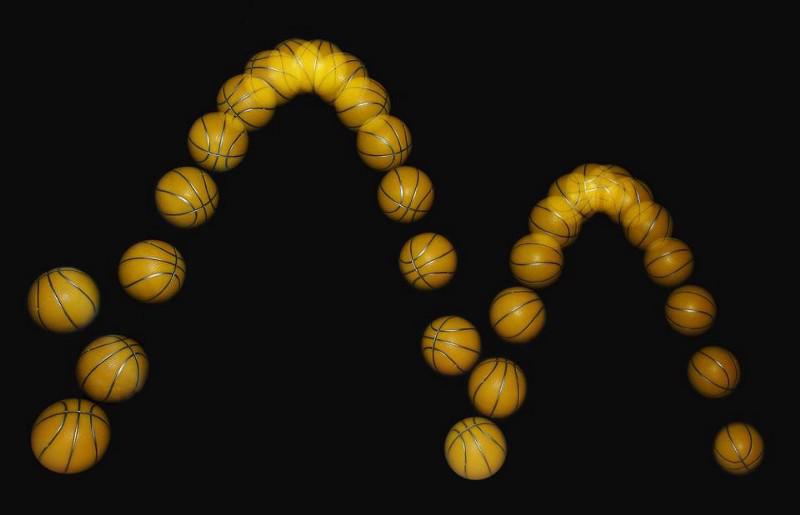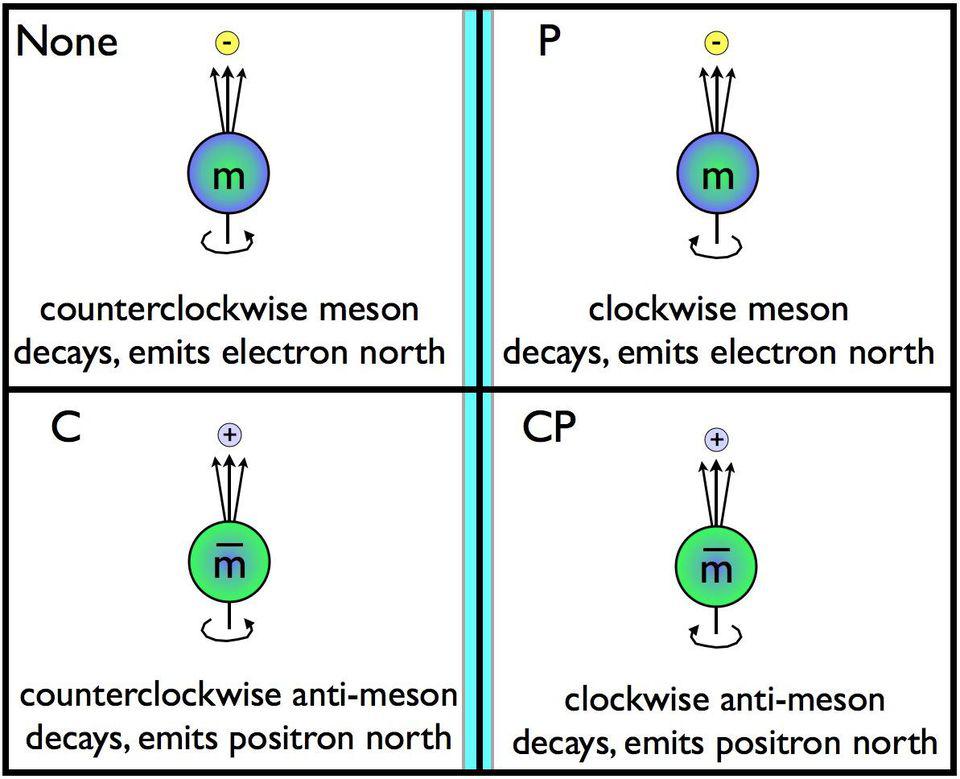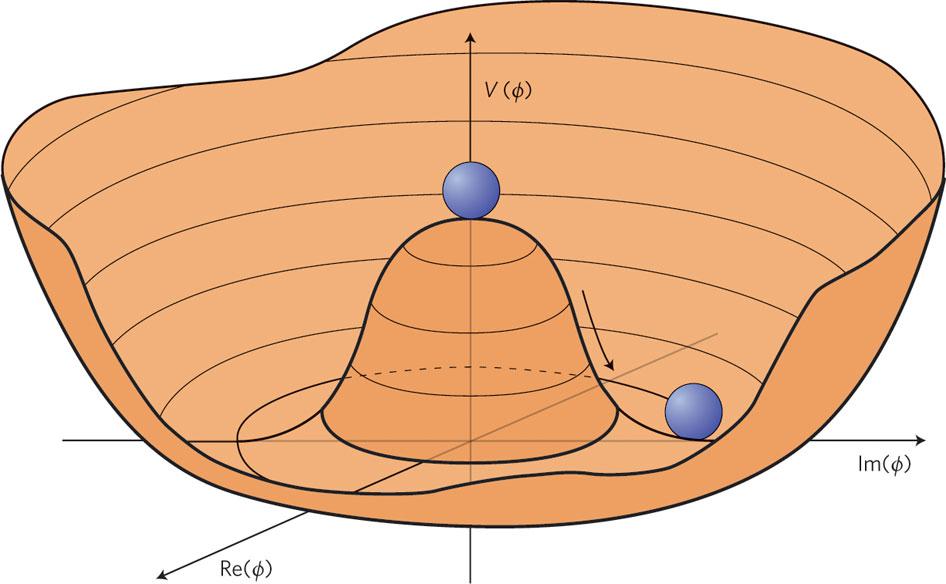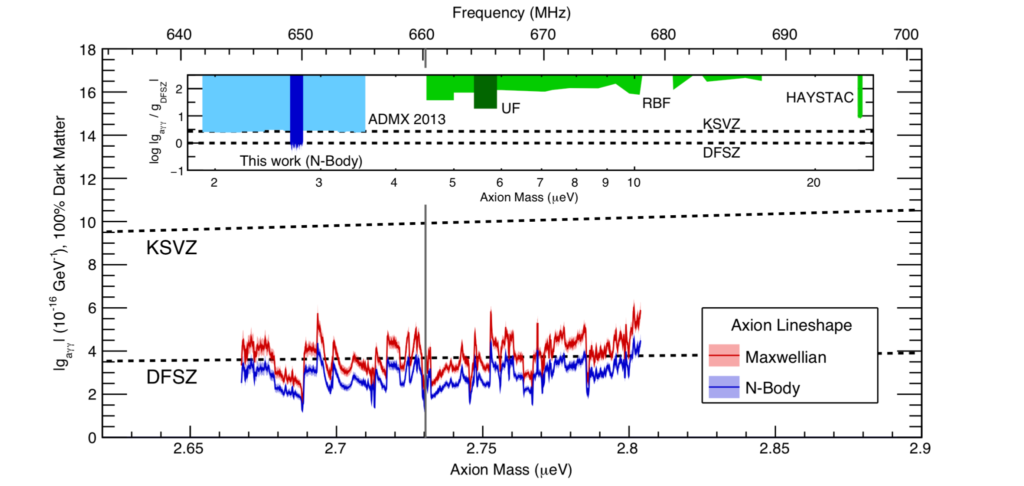- The majority of matter in our Universe isn’t made up of any of the Standard Model components. Is it possible that the axion will save the day?
- Axions are a particle proposed as a solution to a seemingly unrelated particle physics puzzle: why is there no CP-violation in strong interactions? We can induce a new symmetry instead of thinking the Universe is finely tuned, and for each broken symmetry, we get a new particle.
- The axion is a particle that naturally arises from the theory. If the Universe cooperates, the dark matter problem may be solved.
Even with all of the numerous forms that ordinary matter can take, it couldn’t explain the Universe we see on its own, according to astronomy. Aside from stars, planets, gas, dust, plasma, black holes, neutrinos, photons, and other natural phenomena, there’s a mountain of evidence that the Universe contains two unknown ingredients: dark matter and dark energy. Dark matter, in particular, has an incredible amount of astrophysical evidence supporting its existence and abundance — outmassing normal matter by a 5-to-1 ratio — but its particle nature remains a mystery, despite the fact that we’re certain it must have been cold, or slow-moving at the beginning of the Universe, rather than hot, where it would have moved faster.
The axion, one of the leading theories for its nature, is still fascinating more than 40 years after it was initially proposed, but it is rarely discussed in public. Could this intriguing theoretical particle be the key to unlocking the mystery of dark matter? Reggie Grünenberg wants to know, and he’s asking:
“Axions are hypothetical particles and hot candidates for dark matter particles that are thought to have originated in the Big Bang and have been trapped in the cores of stars ever since by a mechanism known as the Primakoff effect.” This would imply that stars would ‘create’ dark matter – and that they would have to lose a lot more mass in this way than they would through nuclear fusion. And that the amount of dark matter in galaxies would increase over time, causing circling stars to accelerate even faster. “Does this model have a chance of working?”
There’s a lot to understand here, but if we take it one step at a time, you might find yourself believing that the axion could one day provide the answer to the universe’s biggest puzzles.

In the standard model, quarks, antiquarks, and gluons have a color charge in addition to all of their other qualities like mass and electric charge. To the best of our knowledge, all of these particles are actually point-like and arrive in three generations. It’s possible that at higher energy, new forms of particles will emerge. (Credit: E. Siegel/Beyond the Galaxy)
The driving force
When we think of the Standard Model of elementary particles, we usually think of the fundamental particles that we know exist in the Universe and how they interact. The fermions of the Standard Model are quarks (up, down, strange, charm, bottom, and top) and leptons (electron, muon, and tau, plus their neutrino analogues), while the bosons are the photon (mediating the electromagnetic force), W and Z bosons (mediating the weak force), eight gluons (mediating the strong force), and the Higgs boson (mediating the strong force) (left over from electroweak symmetry breaking).
In particle physics, there are three types of symmetries that regulate the interactions of fermions under each of these fundamental interactions:
- C (charge conjugation): each particle is replaced by its antiparticle counterpart.
- P (parity) is a function that replaces each particle with its mirrored counterpart.
- and T (time reversal), which replaces forward-in-time exchanges with backward-in-time interactions.
Because of its group structure, each interaction has a mathematical property: it is either abelian or non-abelian. The strong and weak interactions are non-abelian; electromagnetism is abelian. If you’re abelian, you should follow all of these symmetries; if you’re not, you can break one or two, but not all three at once.
 Unstable particles, like as the large red particle shown above, decay through strong, electromagnetic, or weak interactions, resulting in ‘daughter’ particles. If the process in our Universe proceeds at a different pace or has different features than the mirror-image decay process, Parity, or P-symmetry, is violated. P-symmetry is retained if the mirrored process is identical in every way. C-symmetry is tested by replacing particles with antiparticles, while CP-symmetry is tested by doing both at the same time.(Credit: CERN, Kevin Moles)
Unstable particles, like as the large red particle shown above, decay through strong, electromagnetic, or weak interactions, resulting in ‘daughter’ particles. If the process in our Universe proceeds at a different pace or has different features than the mirror-image decay process, Parity, or P-symmetry, is violated. P-symmetry is retained if the mirrored process is identical in every way. C-symmetry is tested by replacing particles with antiparticles, while CP-symmetry is tested by doing both at the same time.(Credit: CERN, Kevin Moles)
The electromagnetic interaction is symmetric under charge conjugation symmetries, parity symmetries, and time reversal symmetries, individually and in any possible combination, according to experimental evidence. Similarly, the weak interaction breaks charge conjugation, parity, and time reversal symmetry, as well as combinations of the CP, CT, and PT symmetries. For the weak interaction, just the combination CPT holds, as it should.
Here’s the kicker: there’s a surprise in store
The strong interaction, like the weak interaction, is non-abelian. However, none of these breaches can be found in powerful interactions for some reason. Instead, they preserve every symmetry, both individually and in any combination: C, P, T, CP, CT, and PT, as well as the obligatory CPT. The combination of CP, in particular, occurs at a 1-in-1,000 level in weak contacts. However, in the case of powerful interactions, it’s been confirmed that if it happens at all, it’s fewer than one in 1,000,000,000!

The laws of physics define the past and future trajectories of a ball in mid-bounce, yet time will only flow into the future for humans. While Newton’s laws of motion remain the same whether the clock is turned forward or backward in time, not all of the rules of physics do, showing a breach of time-reversal (T) symmetry.(Credit: MichaelMaggs and Richard Bartz/Wikimedia Commons)
We usually try to figure out why something that isn’t clearly forbidden doesn’t happen – as Murray Gell-totalitarian Mann’s principle states, “anything not forbidden is necessary.” There’s nothing in the Standard Model that says the strong interaction can’t break the CP symmetry, therefore you only have two choices.
- “Well, the Universe is like this and we don’t know why, and either this parameter is zero or very little, and that’s just the way it is, with no explanation,” you can simply assert. That is feasible, but it is unsatisfactory.
- Alternatively, one may hypothesize that something is suppressing this CP-violation, and that the “something” that does this exceptionally well is introducing a new symmetry. (While having one of the quarks be massless would suffice, all six quarks appear to have positive, non-zero masses.)
The first symmetry that was concocted that satisfies this was devised by Roberto Peccei and Helen Quinn in 1977: the Peccei-Quinn symmetry. They proposed the existence of a new scalar field, and that field should suppress all CP-violating terms in the strong interactions. When the symmetry breaks, which it ought to do very early on as the Universe cools, it should give rise to the existence of a new particle with a non-zero mass: the axion. It should be light, uncharged, and could arise as a consequence of needing to have an additional symmetry to “protect” the CP-symmetry in the strong interactions.

CP symmetry is achieved by swapping particles for antiparticles and reflecting them in a mirror at the same time. CP is broken if the anti-mirror decays differ from the regular decays. If CP is broken, T (time reversal symmetry) must be broken as well. Nobody knows why CP violation only emerges empirically in weak interactions, despite the fact that it is completely allowed in both strong and weak interactions in the Standard Model.(Credit: E. Siegel/Beyond the Galaxy)
The three methods for creating an axion
So, what does it mean for the properties of the particle that must come into existence as a result: the axion, if there is a new symmetry to provide a solution to the otherwise mysterious strong CP problem, and that symmetry is broken in the early Universe, either before/during inflation or only a fraction-of-a-second after it ends?
That is to say, the axion:
- a very weak coupling strength to any particles in the Standard Model,
- Because axions’ couplings and mass are proportionate, they have a very low mass.
- In the Universe, three separate ways should be used to make it.
The first moments of the hot Big Bang are one of the ways to make axions. During this period, the Universe reached its maximum energy, temperature, and density, and anything that can be produced from available energy using Einstein’s E = mc2 formula, including the very light axion, should be. They’d still be moving very rapidly now because of their extremely low mass, implying that they’d be a form of hot dark matter. Of course, the hot Big Bang includes a formula for how many of these particles should be formed, which informs us that these “thermal axions” could make up no more than 0.1 percent of the dark matter.

Quarks and gluons are no longer bonded into protons and neutrons at specific temperatures and densities, such as those created in heavy ion collisions or in the early stages of the hot Big Bang, and instead form a quark-gluon plasma. So long as there is enough energy in the early Universe, intense interactions can form all kinds of particles, including exotic species that have yet to be observed or discovered today. (Credit: Brookhaven National Labs/RHIC)
The second method of generating axions is a little more intriguing, and it has something to do with the precise subject that was posed here. If the axion is a theoretical particle, it should have a non-zero coupling to electromagnetic interactions, specifically the photon. This demands a change to Maxwell’s equations to account for probable photon-axion interactions, which Pierre Sikivie calculated in 1983. The Primakoff effect can convert photons into axions when the correct conditions are available, such as photons in the presence of electric and magnetic fields interacting with the atomic nuclei of regular matter.
This can happen under a variety of circumstances, including:
- Photons travel long distances across the plasmas of intergalactic space.
- in neutron star magnetospheres
- at the cores of sufficiently massive stars,
- as well as in a properly set-up laboratory experiment
Photon-axion oscillations were seriously studied in the late 1990s and early 2000s as a possible explanation for why ultra-distant supernovae were fainter than predicted; currently, there are searches for indirect signs of axion interactions emerging from stars. Although axions may be created in this way, they would still be hot dark matter, accounting for less than 1% of the total mass of dark matter in the Universe.

A finely-tuned condition, or a state of unstable equilibrium, is what we see when we see something like a ball sitting dangerously atop a hill. The ball would be in a far more stable position if it were down at the valley’s bottom. There are good grounds to look for a physically-motivated explanation whenever we come into a finely-tuned physical situation.(Credit: L. Albarez-Gaume & J. Ellis, Nature Physics, 2011)
The third option, on the other hand, is very fascinating. As mentioned above, the Peccei-Quinn symmetry can be visualized as a ball atop a peaked potential with a valley of similar depth all around it: this is known as the “wine bottle” or “Mexican hat” potential. (The phrase used varies depending on whether the physicist instructing you likes alcohol or cultural insensitivity.) The ball slides down into the valley, where it can freely and frictionlessly spin around, when the Peccei-Quinn symmetry breaks, which can happen before, during, or immediately after inflation. However, after a significant length of cosmic time — on the order of 10 microseconds — a distinct transition occurs: quarks and gluons become bound into protons and neutrons, a process known as confinement.
When this happens, the bottle/hat potential tilts to one side, causing the ball to oscillate around the tilted bottle/lowest hat’s point. There’s a tiny bit of friction as the ball oscillates this time, and that friction allows axions, which have a tiny, non-zero mass and a hugely suppressed amount of CP-violation, to be ripped out of the quantum vacuum. We don’t know the mass of the axion or many of its exact features, but the smaller its mass, the more axions will be formed during the transition, and these axions will be born moving extremely slowly, making them cold dark matter rather than hot dark matter. Axions could make up up to 100% of the dark matter in our Universe, depending on the model. If the axion has a few micro-electron-Volts of rest mass energy, axions could make up to 100% of the dark matter in our Universe.

Our galaxy is thought to be embedded in an enormous, diffuse dark matter halo, indicating that there must be dark matter flowing through the solar system. Although we have yet to detect dark matter directly, the fact that it’s all around us makes the possibility of detecting it, if we can surmise its properties correctly, a real possibility in the 21st century.(Credit: R. Caldwell and M. Kamionkowski, Nature, 2009)
Is it possible, though, that they are the dark matter?
This is the most important question, because the only way to find out if axions are the dark matter is to detect them directly. The first true attempt at direct detection depended on the axion’s electromagnetic properties, and evolved out of Sikivie’s early work by inducing axions to transform into photons using a strong magnetic field. If we could accurately determine the mass of the axion, a cryogenically cooled and appropriately sized electromagnetic cavity may allow axions to oscillate into photons of the necessary frequency. The Axion Dark Matter eXperiment was inspired by a cavity haloscope, also known as a Sikivie cavity (ADMX).
Dark matter would not only stream in and out of this cavity as the Earth orbited the Sun and moved across the Milky Way, but the density of dark matter inside would fluctuate with our cumulative speed through the galaxy. As a result, we should be able to detect axions if we guess their inherent properties correctly and their densities are high enough, or rule out axions composing a certain fraction of the dark matter over a specific mass range if we rule out axions composing a certain fraction of the dark matter over a specific mass range if we rule out axions composing a certain fraction of the dark matter over a specific mass range if we rule out a Axions, perhaps the second most popular dark matter option after tightly bound WIMPs, for weakly interacting massive particles, could provide a two-for-one deal, as they could solve both the strong CP and dark matter problems.

The ADMX detecto is being extracted from the surrounding device that generates a high magnetic field to trigger axion-photon conversions in this picture. The mist is caused by the cryogenically chilled insert coming into contact with warm, humid air.
(Credit: Rakshya Khatiwada, University of Washington)
ADMX and the many other tests looking for axions have yet to detect a strong, positive signal, but that should be encouraging. While many other dark matter searches have been reporting false positives for years, ADMX has remained consistent and responsible. They’ve done the following over time:
- Axions were ruled out over a wide mass range, and Peccei and Quinn’s initial axion model was discarded.
- The two most prominent current axion scenarios were both subjected to significant limitations.
- and have worked to improve their detector’s sensitivity and tweak it.
Unlike many of the other prominent dark matter searches, ADMX and comparable studies do not necessitate massive partnerships of hundreds or even thousands of scientists, nor do they necessitate the massive facilities or massive financial commitments that gigantic WIMP detectors like XENON necessitate.
Finding a null result is never as exciting as finding a positive result, but in this line of work, every null result represents another important step forward: ruling out and tightening the constraints on a previously unexplored scenario that could, but does not, account for dark matter in our Universe. More importantly, we can be confident that the scientists working on these experiments are performing their work meticulously and carefully, as opposed to previous experiments that have prompted resource-intensive replication efforts only to discover that the original positive detections were flawed.

The most recent plot, which ignores axion abundances and couplings and assumes that axions account for 100% of the dark matter in the Milky Way. The axion exclusion limits for KSVZ and DFSZ are also shown.(Credit: N. Du et al. (ADMX Collaboration) Phys. Rev. Lett., 2018)
Axions might very well make up the dark matter if they exist, which they almost likely do if there’s some form of symmetry-based explanation why there’s no observed CP-violation in the strong interactions. Although there are three primary methods for axions to form in the Universe, neither those formed in the early stages of the hot Big Bang nor those formed far later in stars and surrounding stellar remnants contribute significantly to the dark matter that surrounds us. The act of quark confinement, on the other hand, produces a vast number of cold, low-mass axions, which could constitute the dark matter. We’re very interested in discovering these axions, and we’re actively looking for them.
Although finding axions from any source would be revolutionary — after all, they’d be the first and only fundamental particle discovered that isn’t part of the Standard Model — the greater prize at stake is figuring out the nature of dark matter and why there isn’t any CP-violation in the strong sector. It’s critical to remember the value each time we look somewhere we’ve never looked before while we fumble around in the metaphorical dark trying to grasp the Universe. We never know what nature has in store for us. The only certainty is that if we don’t look beyond the recognized boundaries, we’ll never find anything new again.

